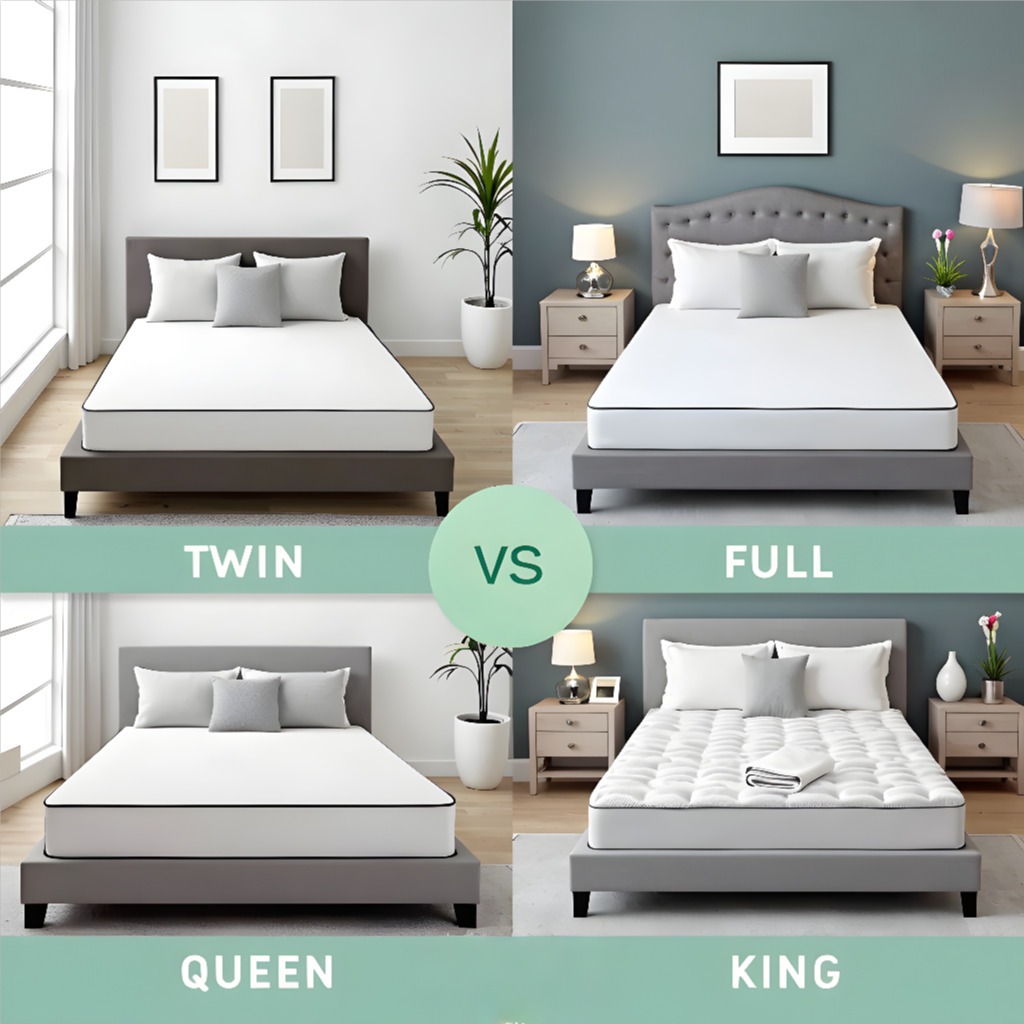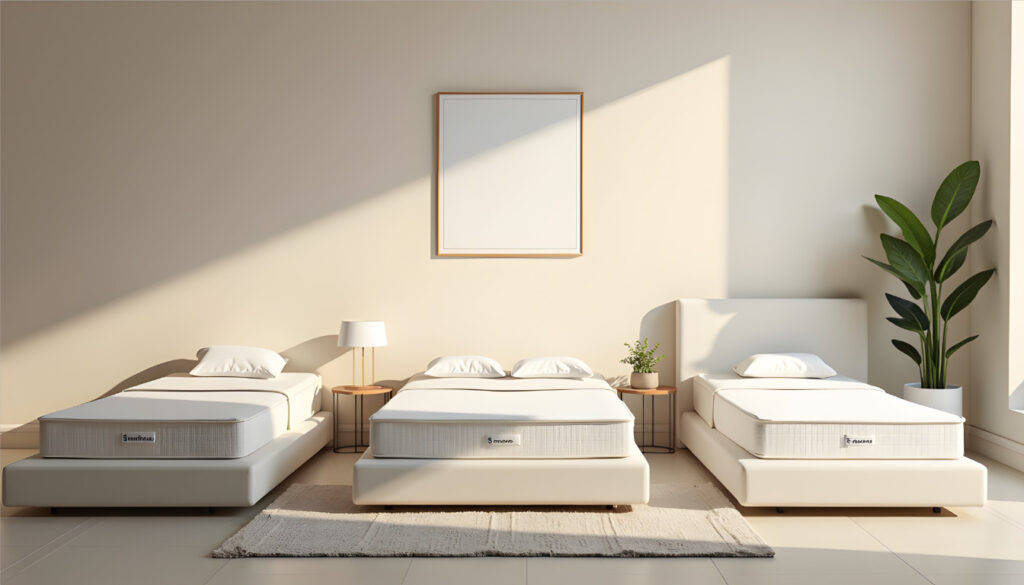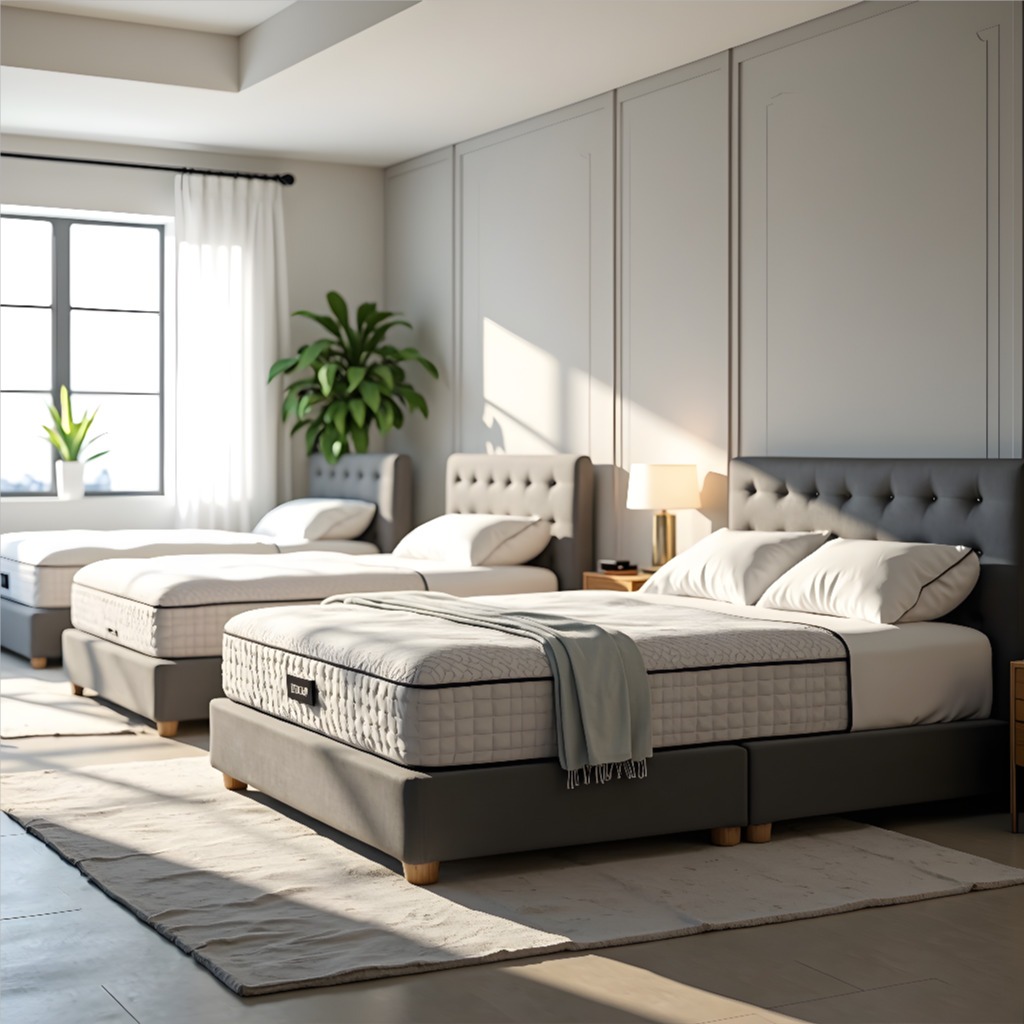
Choosing “How to Understand Mattress and Box Spring Size Relationship” combination is essential for a good night’s sleep. This decision affects not only the comfort of your bed but also its durability. In this article, we will explore how mattress size determines box spring size, which mattresses need special box springs, whether memory foam mattresses can be used with box springs, and answer some of the most common questions about pairing your mattress and box spring correctly.
To find The Best Box Springs, Click Here.
Box Spring Size Based on Mattress Size
The size of your box spring depends on the size of your mattress. Each mattress size, whether twin, full, queen, or king, comes with specific dimensions, and you need to match these with the corresponding box spring for proper support.
Mattress Size Overview
Here’s a breakdown of standard mattress sizes:
- Twin Mattress: Typically 38 x 75 inches. A twin box spring must be designed to these exact measurements to ensure solid support.
- Full Mattress: Usually 54 x 75 inches. A full box spring must have matching dimensions for the mattress to fit and be properly supported.
- Queen Mattress: Commonly 60 x 80 inches. A queen box spring is designed specifically for this size.
- King Mattress: The largest available size, typically 76 x 80 inches. Some king mattresses may require two twin box springs, depending on the manufacturer.
It is vital to select a box spring that matches your mattress size for the best support and longevity.
Mattresses That Need Special Box Springs

Most traditional mattresses work well with a standard box spring, but some modern mattresses require alternative support systems.
Memory Foam Mattresses
Memory foam mattresses are becoming more popular due to their comfort and support. Unlike traditional spring mattresses, memory foam mattresses use layers of foam that contour to the body instead of relying on springs. As a result, choosing a memory foam-compatible box spring or alternative support is essential for long-term durability.
Do Memory Foam Mattresses Need a Box Spring?
No, memory foam mattresses don’t require a box spring. They typically perform better on a flat, solid surface, such as a platform bed or slatted foundation. If you choose to use a box spring, ensure it’s a low-profile or foam-specific box spring designed to support memory foam.
Innerspring Mattresses
Innerspring mattresses rely on a box spring for additional support and are ideal for those looking for more bounce. These mattresses have coils that depend on the box spring for extra support, which helps prolong the mattress’s lifespan.
Hybrid Mattresses
Hybrid mattresses combine the benefits of both innerspring and memory foam. Though a hybrid box spring can be used, a solid platform or slatted foundation is often recommended for better support and airflow.
Memory Foam Mattresses and Box Springs Compatibility

Memory foam mattresses require support that is different from traditional innerspring mattresses.
Why Traditional Box Springs Aren’t Ideal
Traditional box springs use spring systems that provide bounce, which isn’t suitable for memory foam mattresses. The flexibility of a traditional box spring can distort the foam, leading to discomfort and a shorter mattress lifespan.
Recommended Support Options
For memory foam mattresses, the best support options are:
- Platform beds: These provide solid, flat surfaces without springs.
- Slatted foundations: Ensure the slats are closely spaced (no more than 3 inches apart) to prevent sagging or shifting of the mattress.
FAQs about How to Understand Mattress and Box Spring Size Relationship Pairing
Can I use a box spring with a memory foam mattress?
Yes, but it’s essential to use a box spring compatible with memory foam, typically a low-profile or foam-specific box spring. Platform beds or solid foundations are often better for memory foam.
What’s the difference between a low-profile and a regular box spring?
A low-profile box spring is shorter, usually around 5 inches tall. It’s ideal if you want a lower bed height without compromising mattress support.
Can I use a full-size box spring for a queen-size mattress?
No. You must use a queen-size box spring for a proper fit and adequate support for a queen mattress.
How is my box spring still in good condition?
Check for sagging or visible damage. If the box spring is cracked, warped, or sagging, it’s no longer providing adequate support.
What is the best support for a hybrid mattress?
Hybrid mattresses work well with both traditional box springs and modern options like platform beds or slatted foundations. For the best comfort and longevity, a solid platform or slatted base is recommended.
Do I need a box spring for a king-size mattress?
A king-size mattress typically requires a king-size box spring. Alternatively, you can use two twin box springs, depending on the mattress design.
Conclusion: How to Understand Mattress and Box Spring Size Relationship
Choosing the right mattress and box spring is crucial for creating a comfortable and supportive sleep environment. Pairing the correct size of box spring with your mattress ensures optimal performance and durability. Whether you have a traditional innerspring mattress or a modern memory foam design, selecting the right support system is key to a restful night’s sleep.



Leave a Reply